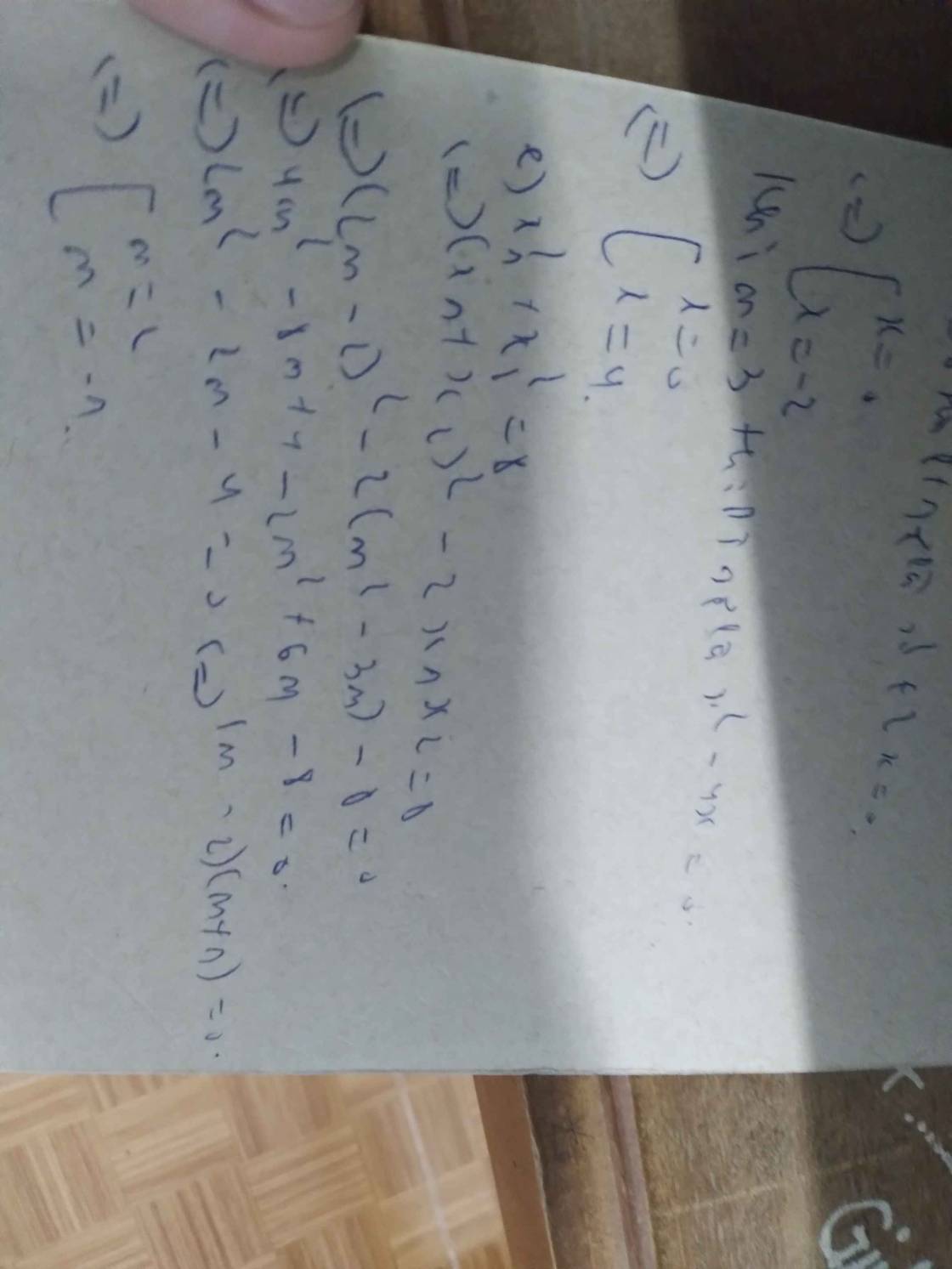1. Cho pt: x2 -2(m-1)x + m2 - 3m = 0
a) Tìm m để pt có 2 nghiệm phân biệt
b) Tìm m để pt có 2 nghiệm x1 , x2 thỏa mãn x21+ x22 = 8
c) Tìm GTNN của A= x21 + x22
2. Cho pt: x2 - 5x + m +4 = 0.Tìm các giá trị của m để pt có 2 nghiệm phân biệt x1 , x2 thỏa mãn:
a) | x2 - x1| = 3
b) |x1| + |x2| = 4


























